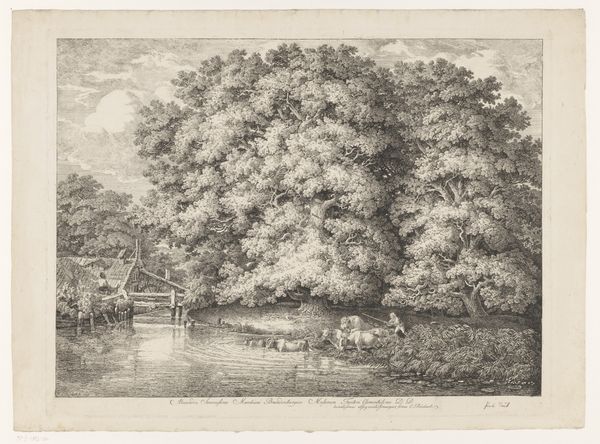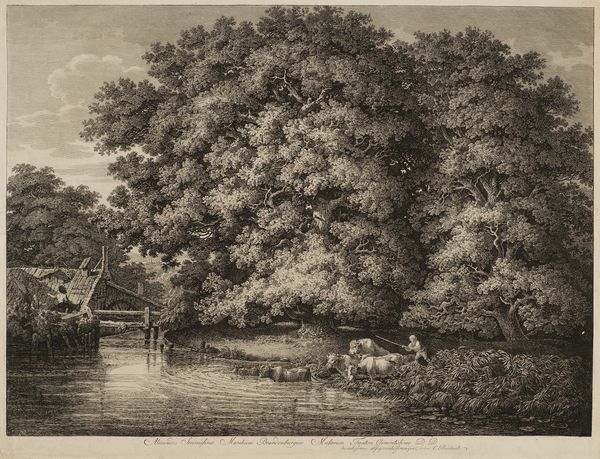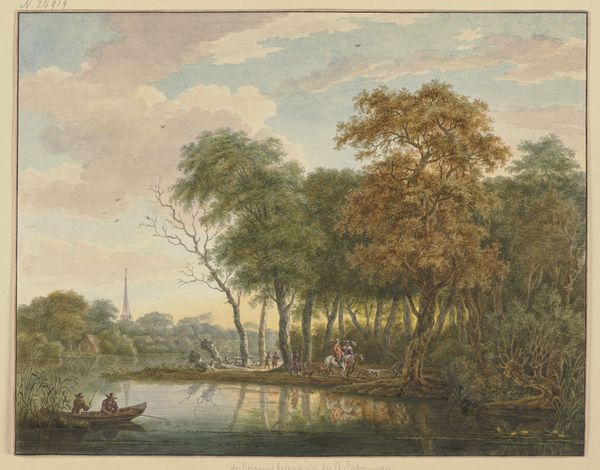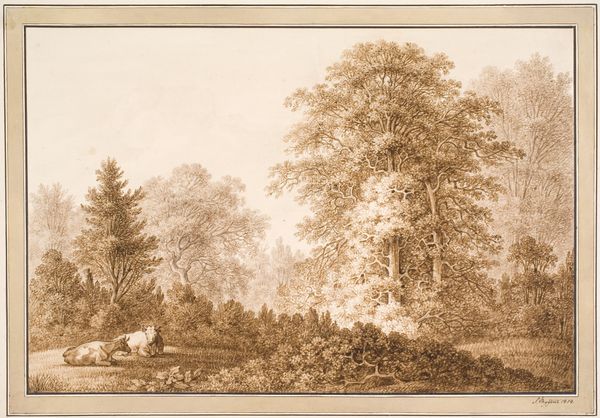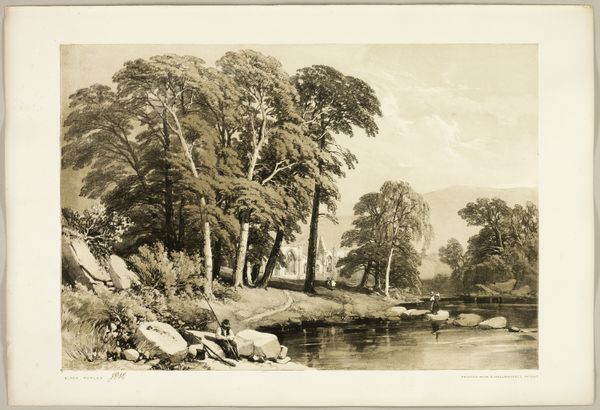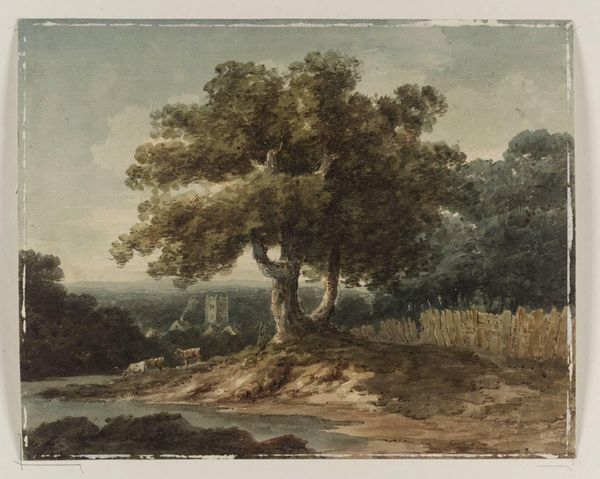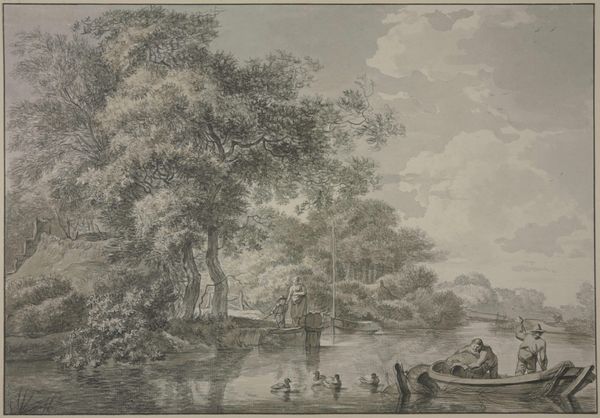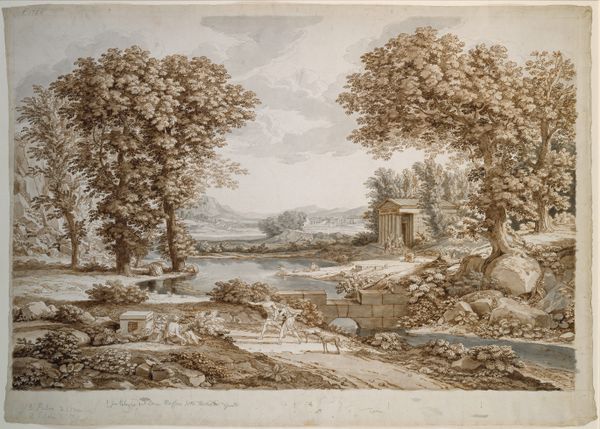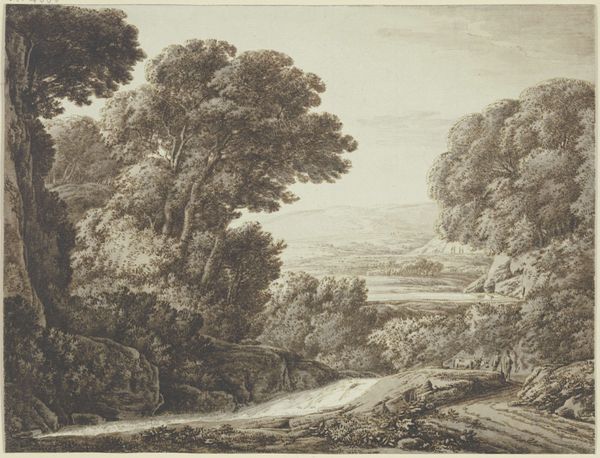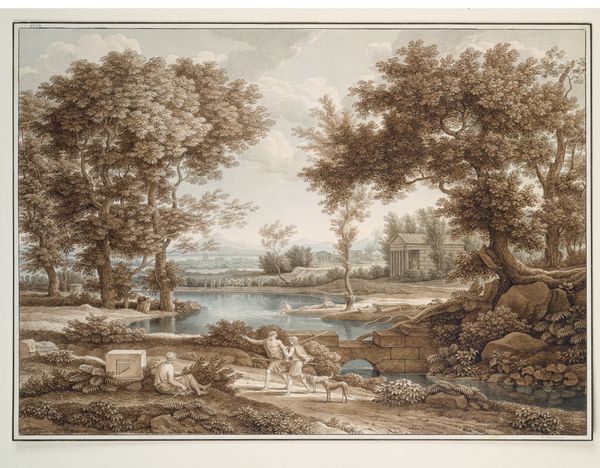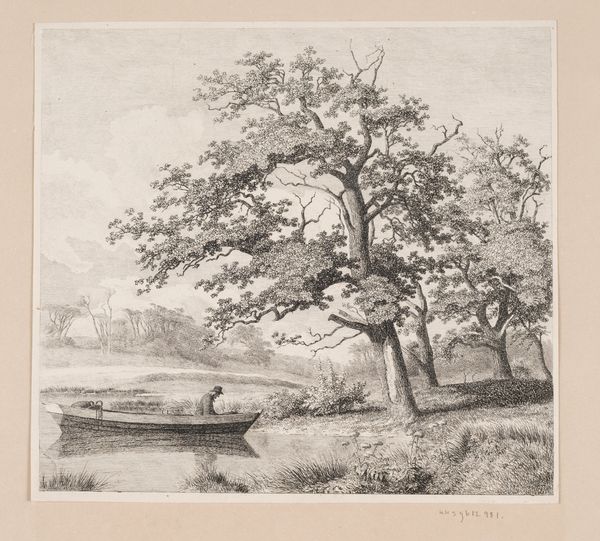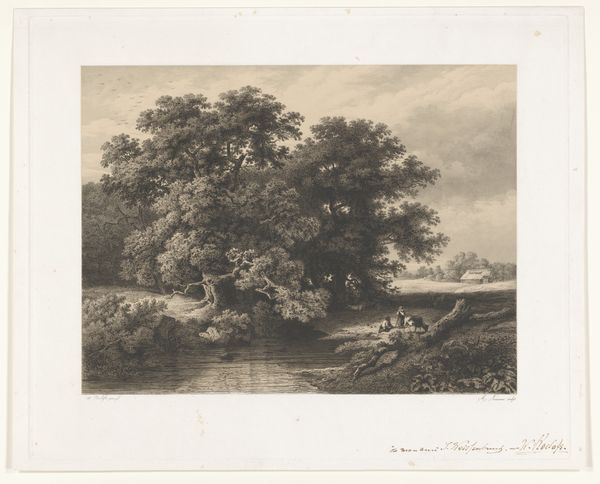
Copyright: Public Domain
Editor: This is "The Mill by the Large Oak Trees," a drawing made with ink by Johann Christian Reinhart in 1786. It feels very calm, almost melancholic. What do you see in this piece? Curator: I see a complex interplay between the rising aesthetic of Romanticism and the lingering influence of Classicism, mirroring the socio-political tensions of the late 18th century. Note the detailed depiction of nature, yes, but within a carefully constructed, almost theatrical composition. Does the mill, a symbol of industry and human intervention, clash with the idealized nature? What is Reinhart suggesting about the encroachment of progress? Editor: So, the choice of subject matter is intentional in expressing this friction? Curator: Precisely. And consider who is omitted: The presence of any figures representative of "the people". Instead, we have pastoral scene devoid of communal activity. It reflects anxieties regarding societal shifts as it seems the revolution brewing in France sought to challenge the dominant order, including in the world of art. Thinkers like Rousseau were emphasizing the individual and a return to nature. Is Reinhart perhaps offering a commentary on this very idea, or a caution against the potentially destructive force of industrialization? Editor: That's a really interesting interpretation; I hadn’t considered that perspective. The absence is significant. Curator: Exactly. These silences speak volumes, challenging us to question the narratives we inherit. It is about what the art is portraying, but about its social and cultural positioning. Editor: I'll definitely look at 18th-century art differently now, with more consideration for social context. Curator: And that context helps unlock powerful meanings embedded in even the most tranquil scenes.
Comments
No comments
Be the first to comment and join the conversation on the ultimate creative platform.
